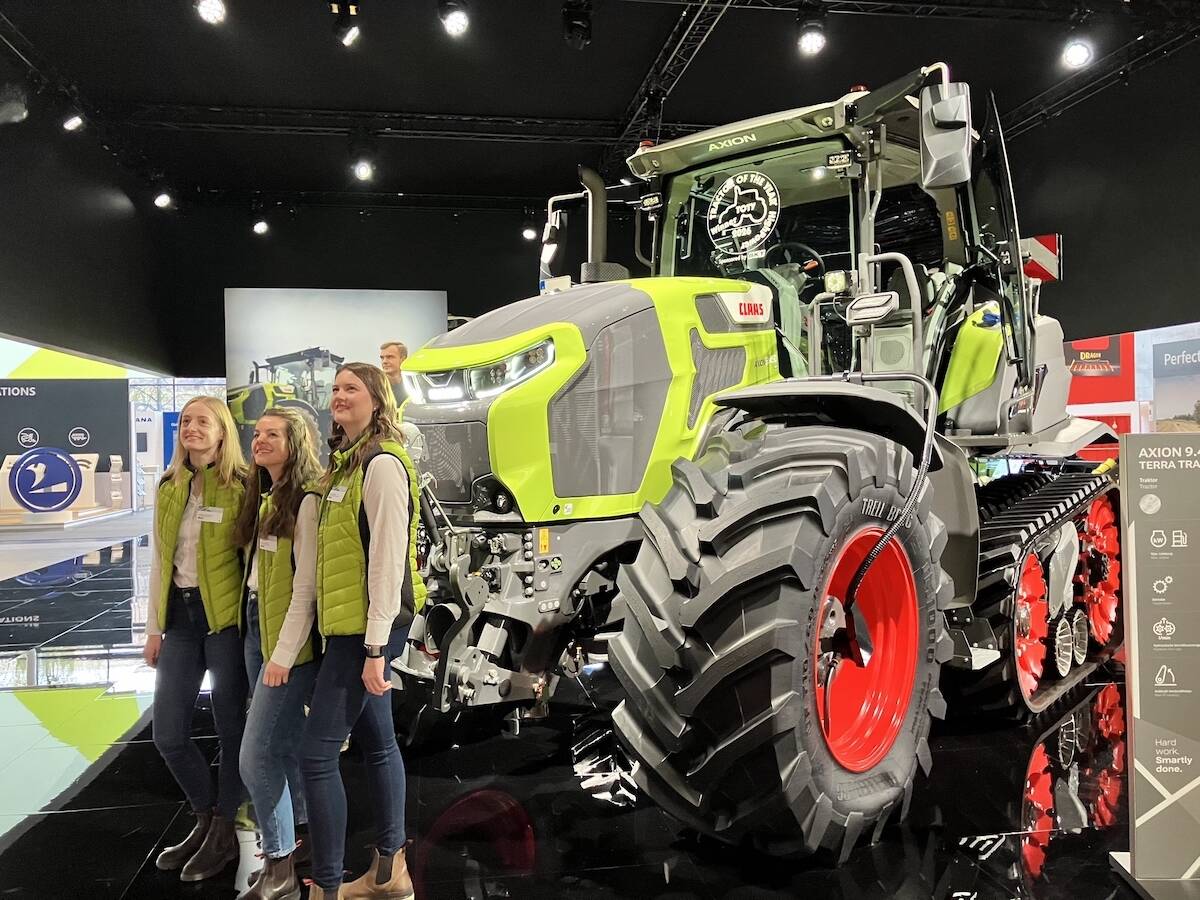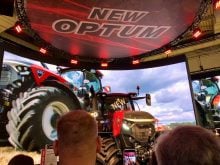Biting and blood-sucking insects can have a powerful and often underestimated impact on cattle grazing behaviour and the health of rangelands.
Studies in the United States and Canada have shown that during the grazing season, yearling cattle that are free from mosquitoes and biting flies gain 15-50 pounds more than heavily infested animals.
Other studies show a 10-15 lb. advantage in calf weaning weights when cows have good insect control.
Insect bites may lower milk production in dairy cattle on pasture by as much as 20 percent.
Read Also

VIDEO: Claas Axion 9.450 tractor wins ‘Tractor of the Year’ at Agritechnica 2025
On opening day of Agritechnica 2025, Claas’ Axion 9.450 Terra Trac tractor was awarded ‘Tractor of the Year’ for 2026 in the HighPower category.
“Both range managers and range scientists need to consider blood-feeding insects as a real component of the rangeland system,” said Doug Colwell at Agriculture Canada’s research centre in Lethbridge.
“Biting flies in particular can cause physiological and behavioural changes that influence what cattle eat and where they congregate in a pasture. This animal response can have a profound impact on grassland utilization and the health of plant communities.”
Colwell said livestock researchers have documented striking examples of how biting and blood-sucking insects affect grazing animals.
Caribou swarmed by mosquitoes will head to wind-swept hilltops or onto snowy ground for relief, while feral horses have been observed moving to windy beaches.
But respite comes at a price. Little if any forage is available in such environments and its palatability and nutritive value are often minimal.
The impact of biting and blood-sucking insects on cattle has long been considered a herd-health problem.
Animals can suffer blood loss, toxic reactions, allergic reactions and sheer exhaustion, as well as heat stress that results when cattle bunch together.
The nature and severity of these problems depends on the insects and the intensity of their attack.
In recent years, researchers have also discovered that insect attacks can have more subtle effects on grazing animals by triggering the production in the brain of powerful proteins and hormones such as opioid peptides and serotonin-related compounds.
These neuro-chemicals regulate many physiological and behavioural reactions to stress and can influence an animal’s memory, learning, anxiety, feeding behavior and appetite, social interaction, reproductive behaviour and resistance to disease.
“Animals learn where to find better quality forage from their herd mates,” Colwell said. “If they’re under attack from biting or blood-sucking insects, their ability to learn from herd mates and to remember where they can find better quality forage can be impaired, so there could be important implications for animals that return to the same pasture year after year.”
The consequences of severe insect populations can be economically significant.
If cattle avoid areas where they are prone to attack, they might alter their grazing patterns substantially, creating serious undergrazing or overgrazing management issues.
Such changes in grazing habits could also have significant environmental consequences for wildlife, riparian zones and waterfowl habitat.
There are few control options for rangeland insects but research is helping develop promising integrated pest management strategies.
Watch next week’s page for a review of common insect control measures.
Rakes and tedders
Massey Ferguson’s new line of rakes and tedders are designed to carefully handle hay crops in all types of terrain.
The rakes come in eight-, 10- and 12-wheel models with raking widths of 18-24 feet. Windrow width on all three models can be adjusted between 48 and 72 inches in six-inch increments.
The rakes feature box-beam frame construction. The 55-inch hay wheels are mounted in pairs and follow ground contours to ensure that no hay is missed.
The machines switch easily from field mode to transport mode using a single hydraulic cylinder that folds in both wings to a transport width of less than 10 feet. Single-wheel raking is an option.
Massey Ferguson also has two hay tedders designed to fluff or spread windrows after a light rain. The two-rotor MF 1610 has a working width of about nine feet and can be folded to a transport width of seven feet. The four-rotor MF 1617 has a working width of 17.5 feet and folds to a width of eight feet.
For more information, write to Agco Corp., 4205 River Green Park, Duluth, Georgia, U.S.A., 30096-2568 or call 770-813-9200.
Axial flow combine
Case IH has added a new model to its 2300 line of combines.
The Class V 2377 axial flow is smaller than the 2388 and AFX8010 models but offers greater capacity than its predecessor, the Case IH 2366.
The new model has an upgraded 190 bushel grain tank and features 7,947 sq. inches of cleaning system capacity. It is powered by a 250 horsepower, Case IH 8.3 litre, turbocharged engine and can deliver a 15 hp rise in tough conditions at 2,100 rpm.
For more information, write to Case IH, 700 State Street, Racine, Wisconsin, U.S.A., 53404 or visit www.caseih.com.
Optical sorters
Sortex has a new line of optical sorters for sorting beans and pulses.
The Z-series sorters are available in one-, two-, three- and four-chute versions with capacities ranging from four to 16 tonnes per hour. The sorters use internal 2,048 pixel cameras to identify seed defects, stains, insect damage and foreign material such as mud balls, sticks, stones, straw and hulls. It also recognizes subtle variations in seed colour.
Users can choose from a variety of threshold settings and combinations to select the preferred end quality. Improvements have also been made to the hopper, vibrator tray and chute design.
For more information, write to Sortex Ltd., Pudding Mill Lane, London, E15 2PJ, England, call 44-0-20-8522 5181 or visit www.sortex.com.
Publication catalogue
The Mid West Plan Service has released its 2004 catalogue of agricultural books and publications.
The catalogue , which contains free and low-cost materials, features more than 140 publications and compact discs on a wide variety of agricultural topics. All materials are written by experts at major American agricultural universities and are presented in clear, practical language.
The material is targetted to producers, agricultural educators and businesspeople. Subjects include livestock management, manure management, agricultural ventilation, soil conservation, water quality, grain and forage production and storage, specialty crop production, weed control, farm building construction, heating and wiring, agricultural marketing, farm safety, wildlife and resource conservation and farm business management.
The catalogue also contains 100 free farm building plans for barns, sheds, greenhouses garages and other farm structures.
To order, contact MidWest Plan Service at 122 Davidson Hall, Iowa State University, Ames, Iowa, 50011-3080, phone 800-562-3618 or visit www.mwpshq.org.
Straw chopper
The Redekop MAV Residue Manager straw chopper spreads straw and chaff in widths ranging from 20 to 45 feet.
It has four rows of straight carbon-steel, beveled-edge, reversible blades mounted in pairs. Optional self-sharpening blades are also available.
The chopper uses Redekop’s patented fan blades to generate air-flow and includes specially designed shrouds to maximize flow around the fan blades.
Write to Redekop Manufacturing, Box 178A, RR #4, Highway 16 West, Saskatoon, Sask., S7K 3J7, call 866-733-3567 or visit www.redekopmfg.com.














